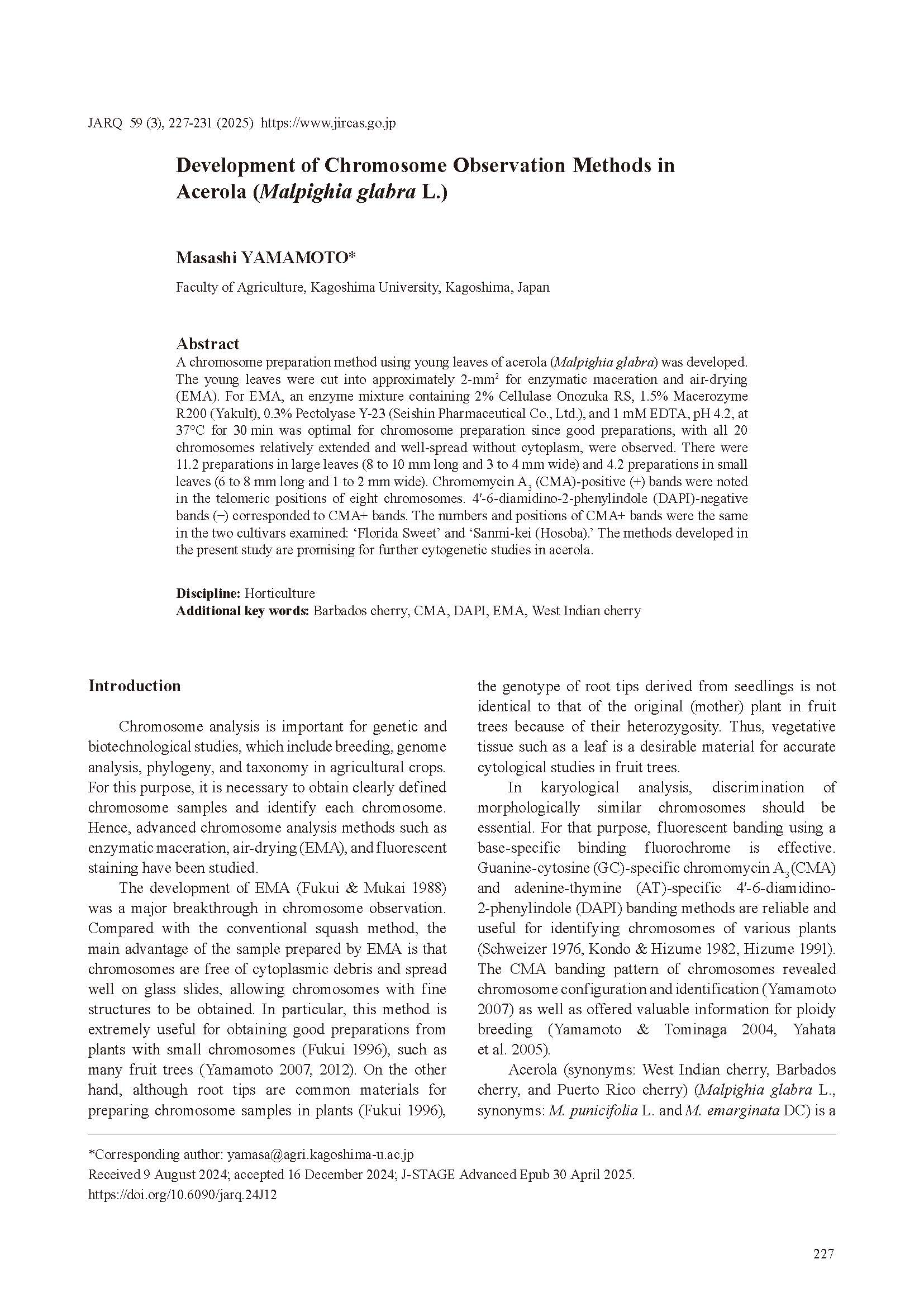Development of Chromosome Observation Methods in Acerola (Malpighia glabra L.)
Japan Agricultural Research Quarterly
| ISSN | 00213551 |
|---|---|
| NII recode ID (NCID) | AA0068709X |

Full text
jarq59-3_227-231.pdf2.85 MB
A chromosome preparation method using young leaves of acerola (Malpighia glabra) was developed. The young leaves were cut into approximately 2-mm2 for enzymatic maceration and air-drying (EMA). For EMA, an enzyme mixture containing 2% Cellulase Onozuka RS, 1.5% Macerozyme R200 (Yakult), 0.3% Pectolyase Y-23 (Seishin Pharmaceutical Co., Ltd.), and 1 mM EDTA, pH 4.2, at 37°C for 30 min was optimal for chromosome preparation since good preparations, with all 20 chromosomes relatively extended and well-spread without cytoplasm, were observed. There were 11.2 preparations in large leaves (8 to 10 mm long and 3 to 4 mm wide) and 4.2 preparations in small leaves (6 to 8 mm long and 1 to 2 mm wide). Chromomycin A3 (CMA)-positive (+) bands were noted in the telomeric positions of eight chromosomes. 4′-6-diamidino-2-phenylindole (DAPI)-negative bands (−) corresponded to CMA+ bands. The numbers and positions of CMA+ bands were the same in the two cultivars examined: ‘Florida Sweet’ and ‘Sanmi-kei (Hosoba).’ The methods developed in the present study are promising for further cytogenetic studies in acerola.
| Date of issued | |
|---|---|
| Creator | Masashi YAMAMOTO |
| Subject | Barbados cherry CMA DAPI EMA West Indian cherry |
| Publisher | Japan International Research Center for Agricultural Sciences |
| Received Date | 2024-08-09 |
| Accepted Date | 2024-12-16 |
| Available Online | |
| Volume | 59 |
| Issue | 3 |
| spage | 227 |
| epage | 231 |
| DOI | 10.6090/jarq.24J12 |
| Relation | eng |
| Language | eng |
